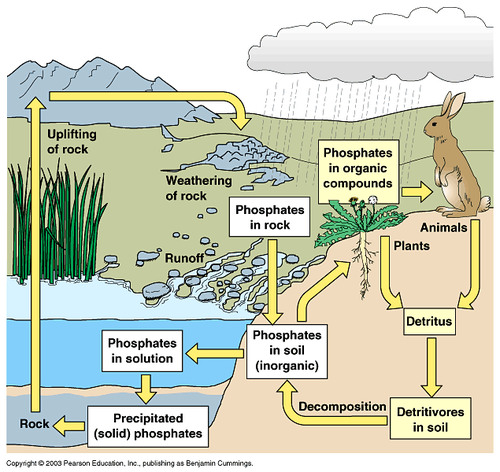Option C: Ecology and Conservation
5.0(1)
5.0(1)
Card Sorting
1/100
Study Analytics
Name | Mastery | Learn | Test | Matching | Spaced |
|---|
No study sessions yet.
101 Terms
1
New cards
Population
A group of organisms of the same species that live in the same area at the same time.
2
New cards
Community
A group of populations living and interacting with each other in an area.
3
New cards
Ecosystem
A community and its abiotic environment.
4
New cards
Limiting Factor
The factor that is most scarce in relation to an organism's needs.
5
New cards
Plant Limiting Factors
Temperature, water availability, light intensity, soil pH, soil sanity, and availability of mineral nutrients
6
New cards
Animal Limiting Factors
Temperature, water, breeding sites, food supply, territory.
7
New cards
Transect
A method used to ensure that there is not a bias in student's selection of a sample and it can be used to correlate the distribution of a plant or animal species with an abiotic variable.
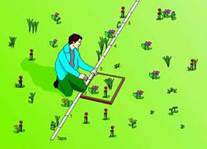
8
New cards
Ecological Niche
The sum total of a species' use of the biotic and abiotic resources in its environment.
9
New cards
The Fundamental Niche
Represents the broadest possible niche a species could potentially live in within the boundaries of its limiting factors or zones of intolerance, with no external pressures such as competitors or interactions with other species. The idea of the fundamental niche is very much theoretical.
10
New cards
The Realized Niche
Represents the actual mode of existence in which the species is really found, taking into account its zone of intolerance as well as all interactions with other species.
11
New cards
Competitive Exclusion Principle
When two species occupy fully overlapping niches, the one with the greater selective advantage will out-compete the other, leading to its extinction from that environment.
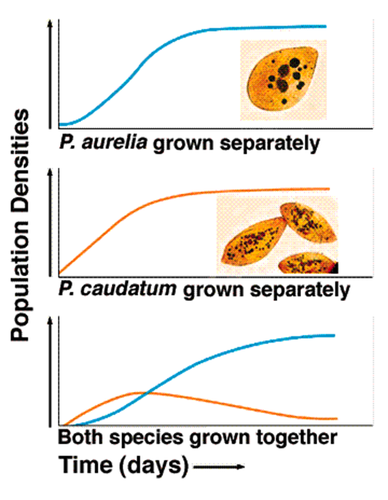
12
New cards
Interspecific Competition
When individuals of one species compete with those of a different species.
13
New cards
Local Examples of Interspecific Interactions
Dodder --> Parasitism (invades plant tissues and obtains nutrients and support from them)
Fire coral and Hawkfish --> Commensalism (fish gains protection from coral without harming it)
Bagworm Moth --> Herbivore
Bahama woodstar and flowers --> Mutualism (Bird gains nectar while plant is assisted in pollination)
Fire coral and Hawkfish --> Commensalism (fish gains protection from coral without harming it)
Bagworm Moth --> Herbivore
Bahama woodstar and flowers --> Mutualism (Bird gains nectar while plant is assisted in pollination)
14
New cards
Intraspecific Competition
Organisms compete with others of the same species for things such as food or a mate.
15
New cards
Predator
An animal that hunts other animals for food
16
New cards
Prey
An organism that is killed and eaten by another organism
17
New cards
Herbivory
Interaction in which one animal (the herbivore) feeds on producers (such as plants)
18
New cards
Parasitism
Where one organism feeds on or off another and does harm to the other
19
New cards
Mutualism
A relationship exists in which both parties benefit
20
New cards
Commensalism
Occurs when one organism benefits and the other is unaffected.
Ex: Hawkfish and fire coral
Ex: Hawkfish and fire coral
21
New cards
Keystone Species
A species that exerts a strong control on community structure without necessarily being abundant in number.
Example: Pisaster sea star
Example: Pisaster sea star
22
New cards
Removal of Keystone Species
- Increase in certain species
- Increase in competition- Wiping out of certain species
- Emigration of some species
- Species diversity decreases (sometimes)
- Increase in competition- Wiping out of certain species
- Emigration of some species
- Species diversity decreases (sometimes)
23
New cards
Endemic Species
species that are native to an area
24
New cards
Alien Species
species that have been transferred from their natural habitat to a new environment where conditions are still suitable for their survival
25
New cards
Invasive Species
Species that increase in number and spread rapidly; have a detrimental effect on native food chains.
26
New cards
Effects of Invasive Species
- Extinction of some native species
- Introduction of diseases
- Increased competition
- Reduction in number of endemic species
--> Excessive predation
--> Interspecific competition due to niche overlap
- Introduction of diseases
- Increased competition
- Reduction in number of endemic species
--> Excessive predation
--> Interspecific competition due to niche overlap
27
New cards
Alien Species Case Studies
- Cane toad in Australia:
--> Introduced to control the cane beetle
--> Toad became a generalist predator and competitor for food resources
- Zebra Mussel in North America
--> Can clog pipes, municipal water systems, etc.
--> Introduced to control the cane beetle
--> Toad became a generalist predator and competitor for food resources
- Zebra Mussel in North America
--> Can clog pipes, municipal water systems, etc.
28
New cards
Methods to Control Alien Species
- Eradication programs
- Biological control
- Biological control
29
New cards
Eradication programs
Application of herbicides and selective harvesting of invasive plants as well as trapping and culling invasive animals. (Ex: removing of invasive mammal species from islands- Norway rats in NZ)
30
New cards
Biological Control
the use of a predator, parasite or pathogen to reduce or eliminate a pest
31
New cards
Biomagnification
The process by which toxins become more concentrated at each successive trophic level.
32
New cards
Bioaccumulation
The process by which toxins build up in the bodies of organisms.
33
New cards
DDT (dichlorodiphenyltrichloroethane)
A colorless odorless water-insoluble crystalline insecticide C14H9Cl5 that tends to accumulate in ecosystems and has toxic effects on many vertebrates; became the most widely used pesticide from WWII to the 1950's; implicated in illnesses and environmental problem; now banned in US.
34
New cards
Benefits of DDT Use
- Indoor spraying against malaria
--> Reduces malaria cases
--> Reduces malaria cases
35
New cards
Risks of DDT Use
- Ecological pollution
- Biomagnification
- Human health risks
- Biomagnification
- Human health risks
36
New cards
Plastics in the Ocean
Macro and micro plastic debris have accumulated in marine environments
--> Release of organic chemicals that can bioaccumulate and biomagnify
--> Plastics absorb organic chemicals thus concentrating toxins
--> Animals eat/become tangled in plastic pollution
--> Laysan Albatross
--> Release of organic chemicals that can bioaccumulate and biomagnify
--> Plastics absorb organic chemicals thus concentrating toxins
--> Animals eat/become tangled in plastic pollution
--> Laysan Albatross
37
New cards
Macroplastics
large visible debris including nets, bucket, and trash that has not degraded
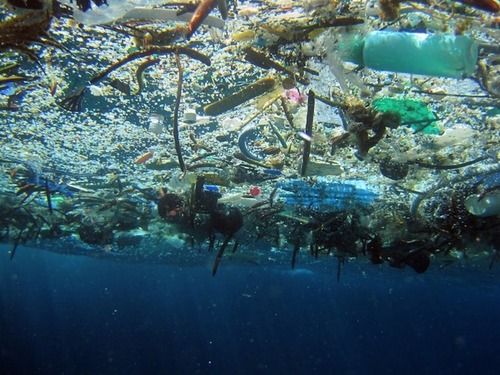
38
New cards
Microplastics
Small pieces of plastic that has been broken down through chemical or physical degradation. Harder to see, but accounts for 65% of all ocean debris.
39
New cards
Gyre
a circular motion of water in each of the major ocean basins
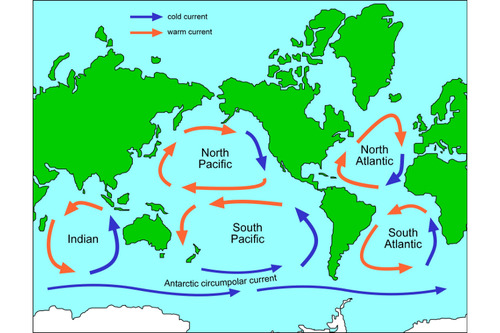
40
New cards
Food Web
A community of organisms where there are several interrelated food chains
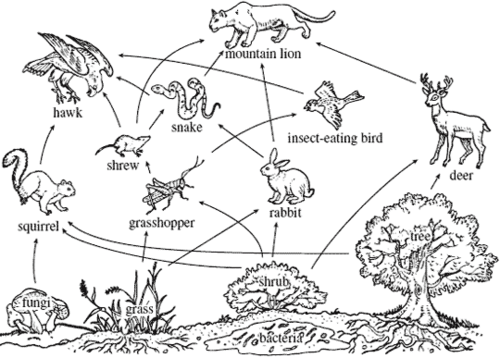
41
New cards
Trophic Level
The position an organism occupies in a food chain
42
New cards
Community
A group of different species that occupy the same location at the same time.
43
New cards
Biome
A large community of plants and animals that occupies a major habitat or region, e.g. rainforest, desert.
44
New cards
Biomass
Total amount of living tissue within a given trophic level
45
New cards
Feed Conversion Ratio (FCR)
A measure of the efficiency of an animal's ability to convert feed mass into increased body mass.
Mass of food consumed (kg)/body mass gain (kg).
Mass of food consumed (kg)/body mass gain (kg).
46
New cards
Whittaker climograph
A graph showing the relationship between temperature, rainfall and ecosystem type
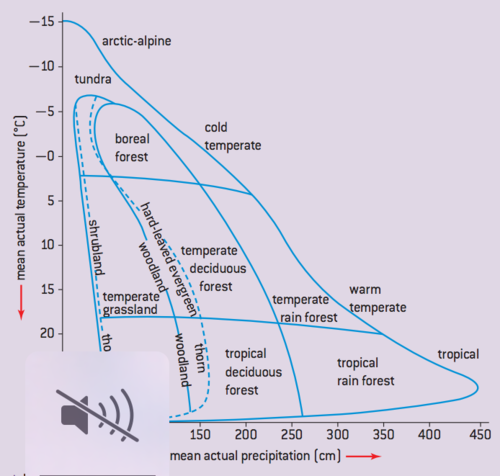
47
New cards
Poikilotherm
An animal which has a variable body temperature according to the surrounding environment
48
New cards
Homeotherm
An animal which maintains a regulated body temperature through physiological mechanisms.
49
New cards
Egestion
The removal of undigested material from the body (feces).
50
New cards
Excretion
The removal of the waste products of metabolic reactions (carbon dioxide/cellular respiration and urea/de-amination of amino acids).
51
New cards
Gersmehl nutrient cycle diagrams
A model of the cycling of nutrients within an ecosystem.
They were first devised by P. F. Gersmehl in 1976, hence the name.
Shows the inter-relationships between nutrient stores and flows.
They were first devised by P. F. Gersmehl in 1976, hence the name.
Shows the inter-relationships between nutrient stores and flows.
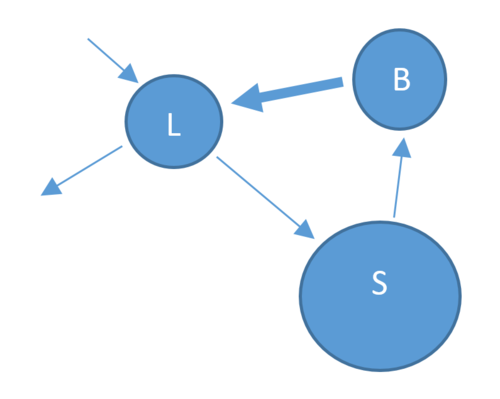
52
New cards
Primary Succession
An ecological succession that begins in an area where no biotic community previously existed
Moss and Lichens are the first species to appear and they can create a layer of soil (through decomposition) for other species to emerge.
Moss and Lichens are the first species to appear and they can create a layer of soil (through decomposition) for other species to emerge.
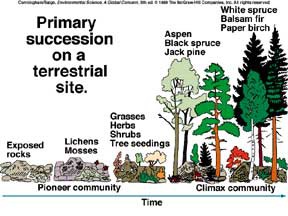
53
New cards
Secondary Succession
Succession following a disturbance that destroys a community without destroying the soil
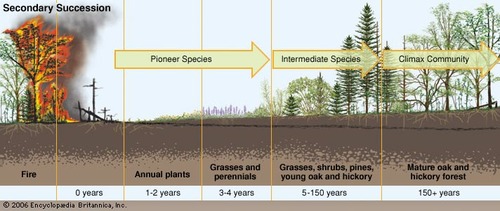
54
New cards
Effect of an Environmental Disturbance on an Ecosystem
Change in:
- Species diversity
- Stem density
- Above ground biomass
- Leaf area index
- Volume of leaf litter
- Water cycle variables including infiltration rates and run-off rates
- Soil variables including soil structure, soil moisture, soil nutrient levels, and compaction levels
- Light levels- Bulk soil density
- Species diversity
- Stem density
- Above ground biomass
- Leaf area index
- Volume of leaf litter
- Water cycle variables including infiltration rates and run-off rates
- Soil variables including soil structure, soil moisture, soil nutrient levels, and compaction levels
- Light levels- Bulk soil density
55
New cards
Net Production Calculation
net production (plants) = gross production - respiration [units are kJ m-2 yr-1]
56
New cards
When is an equilibrium reached?
When total community production to total community respiration (P/R) ratio equals to 1 --> ecosystem has reached a relatively stable stage.
57
New cards
Closed Ecosystem
An ecosystem in which no materials can leave or enter, but through which energy from external sources can flow.
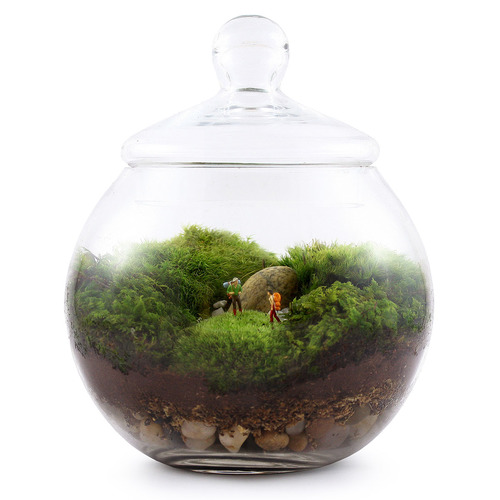
58
New cards
Open Ecosystem
Exchange matter and energy with their surroundings (Ex: natural systems). Undisturbed: the rate of exchange of matter with the surroundings occurs most notably due to the water cycle and nutrient cycles that have a gaseous phase. Human interference increases the exchange of matter
59
New cards
Indicator Species
A species that is present only when specific environmental conditions are met. Examples include:
- Moss
- Coral
- Mayfly Larva
- Moss
- Coral
- Mayfly Larva
60
New cards
Biotic Index
A value derived from a large range of species (indicator species) that have varying degrees of tolerance to a particular abiotic factor, e.g. water pollution or air pollution.
61
New cards
In situ Conservation
Involve endangered species remaining in the habitat to which they are adapted --> conserve more aspects of the organism's niche.
= Establish a nature reserve
= Active management: controlled grazing, removal of shrubs and trees, limiting predators, feeding the animals, etc.
= Establish a nature reserve
= Active management: controlled grazing, removal of shrubs and trees, limiting predators, feeding the animals, etc.
62
New cards
Ex situ Conservation
Involve removal or organisms from their natural habitat. --> Used to back up in situ conservation measures
63
New cards
Conservation of Biodiversity
The preservation of species involves international cooperation through intergovernmental and non-governmental organizations.
64
New cards
Components of Biodiversity
- Richness = number of species present
- Evenness = how close in number each species is
- Evenness = how close in number each species is
65
New cards
Simpson Diversity Index
Quantifies biodiversity- richness and evenness (greater biodiversity=higher value of D)
- D=N(N-1)/Sum n(n-1)
--> N=total number of organisms of all species found
--> n=number of individuals of a particular species
- D=N(N-1)/Sum n(n-1)
--> N=total number of organisms of all species found
--> n=number of individuals of a particular species
66
New cards
Biogeography can influence Diversity
- Large nature reserves=more biodiversity
- Connected nature reserves= more effective at preserving biodiversity
- Circular reserve=better
- Connected nature reserves= more effective at preserving biodiversity
- Circular reserve=better
67
New cards
Impact of Island Size and Edge Effects on Diversity
- Proximity to mainland =new colonization
- Small island =extinction will be higher, small population size, low genetic diversity
- Small island =extinction will be higher, small population size, low genetic diversity
68
New cards
Edge Effect
The condition in which, at ecosystem boundaries, there is greater species diversity and biological density than there is in the heart of ecological communities.
69
New cards
When biologists wish to determine the population of a species within an area, they have one of two options:
- Count every animal.
- Count a sample of the animals present and estimate the total number.
- Count a sample of the animals present and estimate the total number.
70
New cards
Point Sampling
The study area is mapped out and a grid drawn over it. Random points are generated within the grid and sampling is taken as close to those points as possible.

71
New cards
Transect Sampling
Line transect
- A transect line is rolled out over the study area. At regular intervals a sample is then taken. A line transect generally measures presence only.
Belt transect
- Two transect lines are rolled out and the presence and abundance of species that lie between them are recorded.
- A transect line is rolled out over the study area. At regular intervals a sample is then taken. A line transect generally measures presence only.
Belt transect
- Two transect lines are rolled out and the presence and abundance of species that lie between them are recorded.
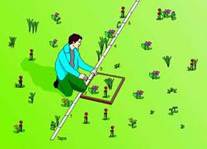
72
New cards
Quadrat Sampling
The study area is mapped out into a grid of squares and some are chosen at random. Within those squares the presence and abundance of species are recorded.
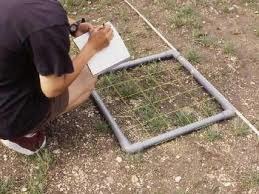
73
New cards
Mark and recapture (The Lincoln index)
Within the study area a portion of a population is captured, marked and then released.
At a chosen time, a second capture is carried out and the number of those from the previous capture is recorded. Using a mathematical formula, the population number is estimated.
At a chosen time, a second capture is carried out and the number of those from the previous capture is recorded. Using a mathematical formula, the population number is estimated.
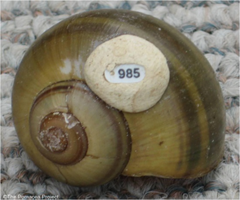
74
New cards
Lincoln Index Formula
Population Size (N) = n1 x n2/n3
N = total population size of animals in the study site
n1 = number of animals captured on the first day = number of animals marked
n2 = number of animals captured on the second day
n3 = number of marked animals recaptured on the second day
N = total population size of animals in the study site
n1 = number of animals captured on the first day = number of animals marked
n2 = number of animals captured on the second day
n3 = number of marked animals recaptured on the second day
75
New cards
Overfishing
When fishermen remove fish from the seas at a rate that is greater than the rate at which fish reproduce.
76
New cards
Underfishing
When fishermen remove fish at a rate that is less than the rate at which fish reproduce.
77
New cards
Maximum Sustainable Yield
The maximum rate at which a renewable resource can be exploited without impairing its ability to be renewed or replenished
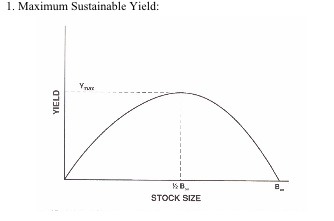
78
New cards
Strategies for Sustainable Fishing
- Established quotas to ensure that there is a maximum mass of fish caught.
- Exclusion zones to protect vulnerable areas and allow fish the opportunity to breed safely.
- Closed seasons in which no fishing is allowed. This gives fish the opportunity to breed and a chance for the population to re-establish themselves.
- Restriction of net size so that excessively large nets are not allowed. Also, enforcement of large mesh sizes so that the younger fish are able to swim through the nets and continue to grow and breed before being caught.
- Ensuring that juvenile fish are allowed to grow and breed before capture. This can be achieved by determining the relationship between the age of fish and their size.
- Exclusion zones to protect vulnerable areas and allow fish the opportunity to breed safely.
- Closed seasons in which no fishing is allowed. This gives fish the opportunity to breed and a chance for the population to re-establish themselves.
- Restriction of net size so that excessively large nets are not allowed. Also, enforcement of large mesh sizes so that the younger fish are able to swim through the nets and continue to grow and breed before being caught.
- Ensuring that juvenile fish are allowed to grow and breed before capture. This can be achieved by determining the relationship between the age of fish and their size.
79
New cards
J Shaped Growth Curve
The maximum rate at which a population can increase given ideal conditions and unlimited resources (things it needs to use) is called its biotic potential (Intrinsic rate of increase [r]). Factors that determine the biotic potential of an organism include its fertility rate, generation time and size. These factors are in-built and non-environmental.
![The maximum rate at which a population can increase given ideal conditions and unlimited resources (things it needs to use) is called its biotic potential (Intrinsic rate of increase [r]). Factors that determine the biotic potential of an organism include its fertility rate, generation time and size. These factors are in-built and non-environmental.](https://knowt-user-attachments.s3.amazonaws.com/e894daedbb244efda2f262cfaca6e628.jpg)
80
New cards
S Shaped (Sigmoid) Growth Curve
Exponential growth does not continue forever; eventually, density-dependent factors such as food availability, space, disease, predators and possibly toxic waste products produced by the organisms will set limits to population increase.
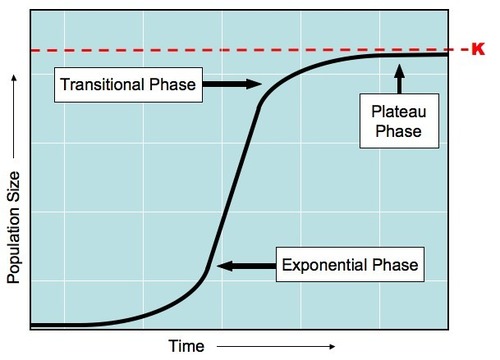
81
New cards
Carrying Capacity (K)
The maximum population that the environment can indefinitely sustain.
82
New cards
Natality (N)
birth rate
83
New cards
Immigration (I)
Migration to a new location
84
New cards
Mortality (M)
death
85
New cards
Emigration (E)
Migration from a location
86
New cards
Equilibrium in a Population is Reaching When:
N + I = M + E.
87
New cards
Top Down Limiting Factor
- Population growth of species within a food web is affected by the number of consumers and predators and the rate at which they graze or consume prey.
- If there is a reduction in grazing fish through human impact (fishing) then top-down limiting factors are affected and once again, algal blooms can occur.
- If there is a reduction in grazing fish through human impact (fishing) then top-down limiting factors are affected and once again, algal blooms can occur.
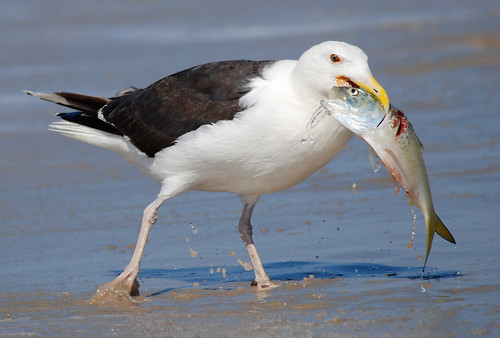
88
New cards
Bottom Up Limiting factors
- Controls of population density from resources such as light or nutrients for plants and prey organisms for animal.
- If nutrient enrichment occurs through human activities such as fish farming, application of fertilizer on nearby fields or through sewage outflows into the sea, then bottom-up limiting factors are affected through the forming of algal blooms and eutrophication occurs.
- If nutrient enrichment occurs through human activities such as fish farming, application of fertilizer on nearby fields or through sewage outflows into the sea, then bottom-up limiting factors are affected through the forming of algal blooms and eutrophication occurs.
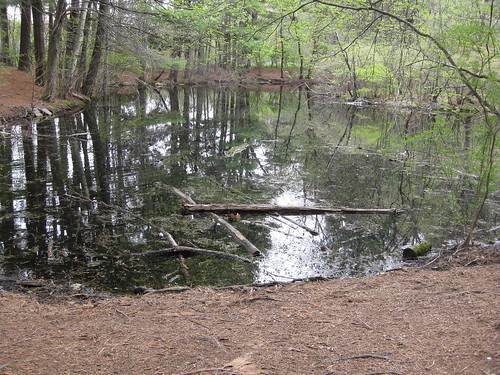
89
New cards
Nitrogen Cycle
The transfer of nitrogen from the atmosphere to the soil, to living organisms, and back to the atmosphere
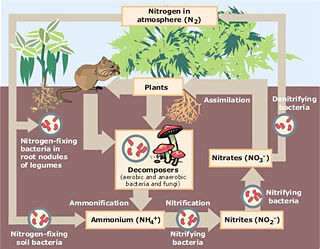
90
New cards
Nitrogen Fixation in Free Soil
- N2 -> NH3
- Azotobacter are free-living bacteria that can be found within soil.
- Azotobacter are free-living bacteria that can be found within soil.
91
New cards
Mutualistic Nitrogen Fixation
- N2 -> NH3
- Rhizobium are NOT free-living bacteria, cannot be found loose within the soil and must form root nodules with plants called legumes.
- Rhizobium are NOT free-living bacteria, cannot be found loose within the soil and must form root nodules with plants called legumes.
92
New cards
Abiotic/Industrial Nitrogen Fixation
- N2 -> NH3
- Production of fertilizer using the Haber Process
- Lightening striking atmospheric Nitrogen
- Production of fertilizer using the Haber Process
- Lightening striking atmospheric Nitrogen
93
New cards
Nitrification (1st)
Ammonia to Nitrites
NH3 -> NO2
Nitrosomonas (Bacteria)
NH3 -> NO2
Nitrosomonas (Bacteria)
94
New cards
Nitrification (2nd)
Nitrites to Nitrates
NO2 -> NO3
Nitrobacter (bacteria)
NO2 -> NO3
Nitrobacter (bacteria)
95
New cards
Uptake
Nitrates are actively transported into the roots of plants using ATP for energy
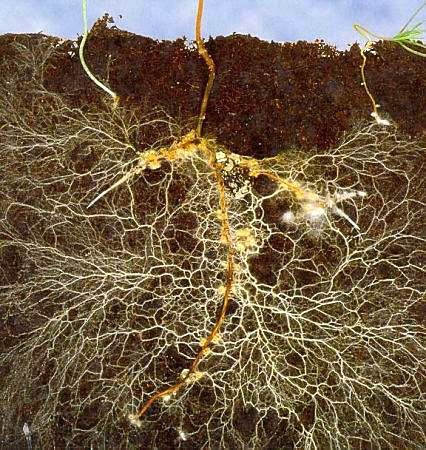
96
New cards
Assimilation
- Plants use nitrates to make their own proteins
- Animals feed on plants, digest and rearrange proteins to make their own proteins
- Animals feed on plants, digest and rearrange proteins to make their own proteins
97
New cards
Death and Excretion
The waste production of digestion and dead bodies of plants and animals are full of molecules containing nitrogen.
98
New cards
Decomposition
- Decomposers such as bacteria and fungi break down complex proteins and release Nitrogen gas into atmosphere.
- Proteins -> N2
- Proteins -> N2
99
New cards
Denitrification
- NO2 & NO3 -> N3
- Bacteria remove nitrates and nitrites and put nitrogen gas back into atmosphere
- Pseudomonas denitrificans (bacteria)
- Bacteria remove nitrates and nitrites and put nitrogen gas back into atmosphere
- Pseudomonas denitrificans (bacteria)
100
New cards
Phosphorus Cycle
The movement of phosphorus atoms from rocks through the biosphere and hydrosphere and back to rocks.
